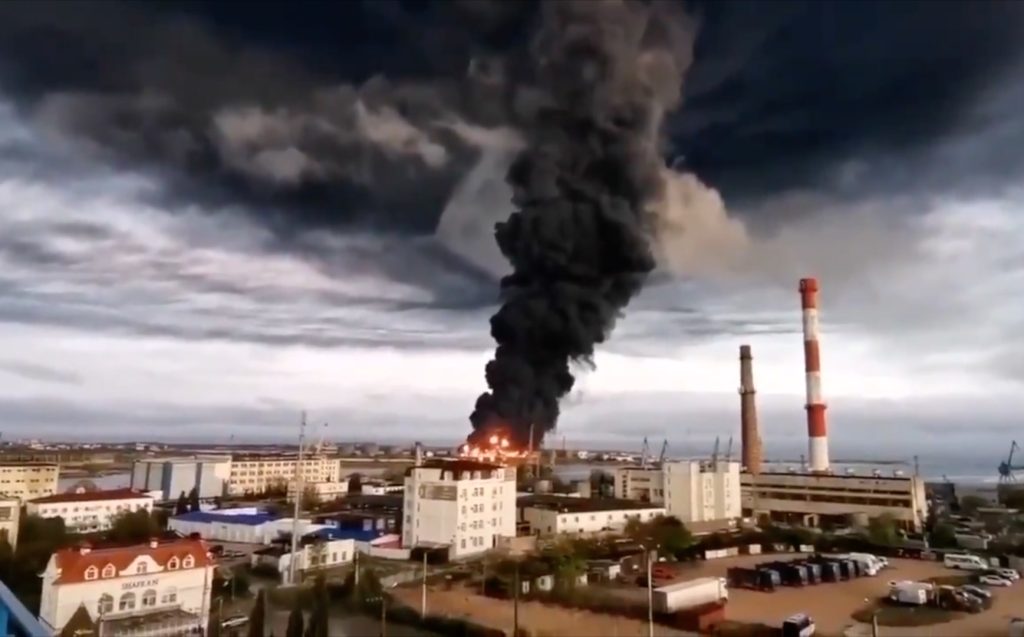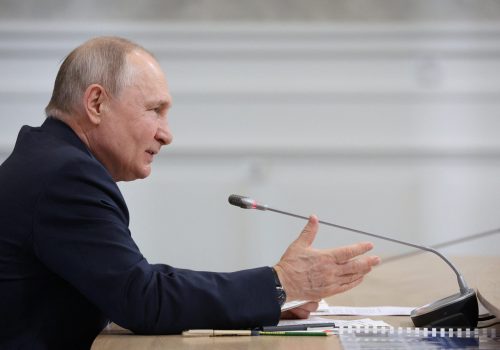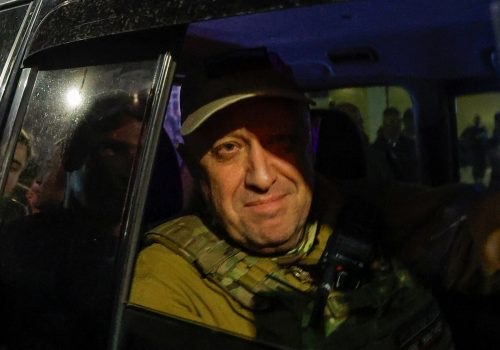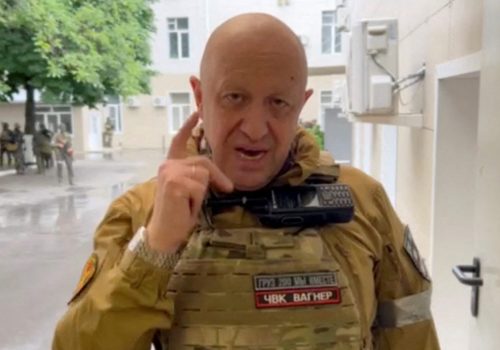Crimea is the location that most often captures international attention when it comes to Ukraine’s fight to regain all its lost territory. But it would be militarily foolish for Ukraine, as part of the counteroffensive that is now underway, to charge into the Russian-occupied peninsula. Instead, there are ways for the Ukrainians to render Crimea strategically irrelevant militarily to their Russian foes.
By initially attacking along a broad front, the Ukrainians can probe Russian lines and hide their true objective until they determine the weakest point to strike. Once the Ukrainians reach Russia’s multi-layered defensive fortifications, the most challenging phase of the counteroffensive will begin.
Ukrainian combat engineers will need to go through the slow and deadly process of clearing mines and blowing up tank obstacles under the cover of infantry and creeping artillery barrages. While the United States recently sent Mine Resistant Ambush Protected Vehicles (MRAPs), mine rollers, and demolition equipment for obstacle clearing, Ukraine will need much more to break through the Russian defenses.
If the Ukrainians can exploit the advantage of their superior tanks supplied by NATO members, they can drive deep into the rear area of Russian-occupied territory and split the Russian force in two with a combination of armor and HIMARS strikes guided by unmanned aircraft systems. This would enable the Ukrainian military to break the land bridge that Russia has created by occupying a continuous swath of Ukrainian territory from the Russian border to Crimea.
If Ukraine can breach the Russian defensive line of obstacles and minefields in two or three locations, it could provide multiple axes of advance to exploit and keep the Russians off balance, or allow the Ukrainians to at least feint in one or more spots and tie down Russian defenders. At the same time, Ukrainian tanks could rapidly move to exploit their success before the Russians recognize these advances, and could ideally penetrate the Russian rear area before they can deploy their reserves. This scenario would offer the Ukrainians the best chance they have had thus far in this war to liberate large swaths of occupied territory. But it would also in all likelihood be a long battle with significant casualties.
Stay updated
As the world watches the Russian invasion of Ukraine unfold, UkraineAlert delivers the best Atlantic Council expert insight and analysis on Ukraine twice a week directly to your inbox.
It is unlikely that this counteroffensive will result in the liberation of Crimea. The narrow isthmus that connects the peninsula to the mainland of Ukraine makes it the most easily defensible piece of Russian-occupied territory. Because the Ukrainian military lacks an amphibious capability, the Russians can concentrate all their forces there, making any attempt at a southward advance extraordinarily deadly.
Yet the Ukrainians are savvy enough to realize that the actual value of Crimea to the Russians is the port of Sevastopol, despite Russian President Vladimir Putin’s claims of solidarity with the largely Russian-speaking population of the peninsula.
Ukraine has the ability to render the strategic value of Crimea moot and make Russia’s Black Sea Fleet pay a high price every time it attempts to leave the port of Sevastopol. Ukraine can achieve this by deploying advanced naval mines offensively as effectively as they did defensively close to the Ukrainian port city of Odesa; and by employing their Neptune anti-ship missiles as they have done to deadly effect in the past.
Eurasia Center events

The addition of F-16 fighter jets to Ukraine’s arsenal will provide another weapon to strike Russia’s naval base in Sevastopol and is a welcome change in US policy. Although still a fourth-generation aircraft and susceptible to Russia’s S-400 surface-to-air missile system, the F-16 is superior to anything the Ukrainian Air Force currently operates as a fighter or an air-to-ground attack aircraft.
Unlike the MiG-29, Su-27, Su-24, and Su-25 of the Ukrainian Air Force, the F-16 can carry the entire range of US and NATO laser-guided and GPS-guided air-to-ground ordnance, which will be vital for striking Russian targets deep in occupied territory including Crimea while avoiding collateral damage and civilian casualties. Additionally, its superior radar and ability to employ the AIM-120 Advanced Medium-Range Air-to-Air Missile (AMRAAM) and AIM-9X Sidewinder make it superior to Russia’s Mig-29 and Su-27 in aerial combat. But since it will take three to four months to transition Ukrainian pilots to the F-16, these fighters will not play a significant role in the current counteroffensive.
The Ukrainians have demonstrated their commitment to their cause through superior leadership, morale, and courage under fire. At the same time, Russia’s shift to prepared defenses may allow them to shore up the flagging confidence of their largely conscripted army. While the current Ukrainian counteroffensive is a welcome step toward victory in this war, it will be one of many campaigns over the course of what will likely be a long and arduous struggle.
Col. John B. Barranco (Ret.) was the 2021-22 US Marine Corps senior fellow at the Atlantic Council’s Scowcroft Center for Strategy and Security and is currently executive vice president of Potomac International Partners.
Further reading
The views expressed in UkraineAlert are solely those of the authors and do not necessarily reflect the views of the Atlantic Council, its staff, or its supporters.

The Eurasia Center’s mission is to enhance transatlantic cooperation in promoting stability, democratic values and prosperity in Eurasia, from Eastern Europe and Turkey in the West to the Caucasus, Russia and Central Asia in the East.
Follow us on social media
and support our work
Image: A huge plume of dark smoke rising in the Crimean port of Sevastopol on Saturday April 29, 2023 after an alleged drone attack on the city. Sevastopol, which is on the Crimean peninsula that Russia annexed from Ukraine in 2014, has come under repeated air attacks since Russia sent troops into Ukraine last February. Russian officials have blamed the attacks on Ukraine. (EYEPRESS via Reuters Connect)




